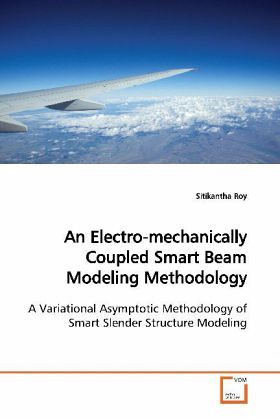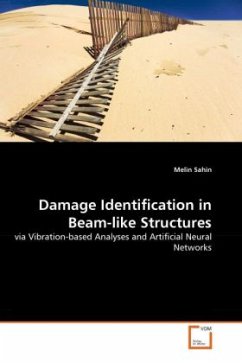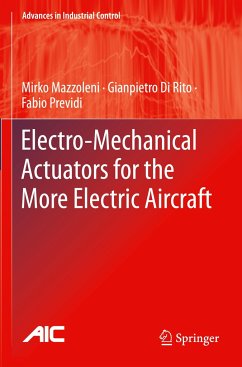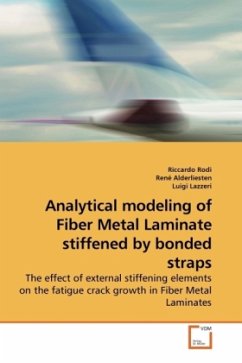
An Electro-mechanically Coupled Smart Beam Modeling Methodology
A Variational Asymptotic Methodology of Smart Slender Structure Modeling
Versandkostenfrei!
Versandfertig in 6-10 Tagen
39,99 €
inkl. MwSt.

PAYBACK Punkte
20 °P sammeln!
The present research develops a one dimensionalmodel for an electro-mechanical slender structure byapplication of Variational Asymptotic Method. Anelectro-mechanical generalized cross-sectional modelfor beam like slender structure has been derived by atwo-step procedure of dimensional reduction. First,the 3D governing variational statement forelectro-mechanical system has beenapproximated asymptotically, followed by across-sectional minimization on the approximatedfunctional. Depending on the type ofelectrode arrangements, the whole problem has beenclassified into two separate categories:Axial...
The present research develops a one dimensional
model for an electro-mechanical slender structure by
application of Variational Asymptotic Method. An
electro-mechanical generalized cross-sectional model
for beam like slender structure has been derived by a
two-step procedure of dimensional reduction. First,
the 3D governing variational statement for
electro-mechanical system has been
approximated asymptotically, followed by a
cross-sectional minimization on the approximated
functional. Depending on the type of
electrode arrangements, the whole problem has been
classified into two separate categories:
Axial-Problem and Radial-Problem. Axial problem
contains an extra 1D electrical degree of freedom
along with the six conventional mechanical degrees of
freedom commonly considered in Timoshenko like
modeling. Radial problem contains only mechanical
degrees of freedom in its 1D representation.
model for an electro-mechanical slender structure by
application of Variational Asymptotic Method. An
electro-mechanical generalized cross-sectional model
for beam like slender structure has been derived by a
two-step procedure of dimensional reduction. First,
the 3D governing variational statement for
electro-mechanical system has been
approximated asymptotically, followed by a
cross-sectional minimization on the approximated
functional. Depending on the type of
electrode arrangements, the whole problem has been
classified into two separate categories:
Axial-Problem and Radial-Problem. Axial problem
contains an extra 1D electrical degree of freedom
along with the six conventional mechanical degrees of
freedom commonly considered in Timoshenko like
modeling. Radial problem contains only mechanical
degrees of freedom in its 1D representation.












